7 smart ways to protect your skin this summer
From sunburns to melasma, here's how to beat the heat.
Updated on September 5, 2023

Hot, humid weather can mean major skin problems. Among other issues, too much time in the sun can cause sunburns and sun damage, and working out in the heat can lead to uncomfortable chafing.
It’s important to be proactive when it comes to taking care of your skin in the heat. Try these tips to keep pesky skin issues from putting a damper on your summer fun.
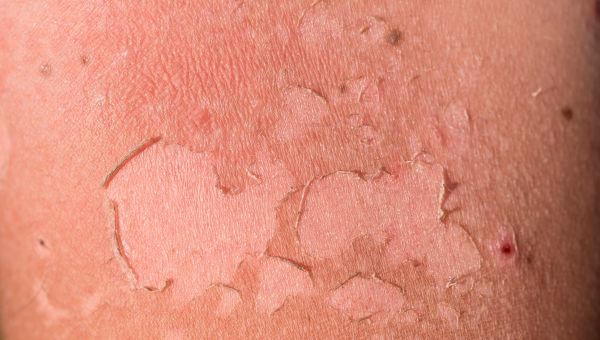
Sunburns
When your skin isn’t protected by sunscreen or clothes, or you’re out in the sun for too long, you can develop a sunburn or suntan. People who already have dark skin may turn a darker shade of brown, while those who have particularly light skin are more likely to turn red or burn than others.
It's important to remember that just because you’re not sunburned doesn’t mean you don’t have skin damage. A suntan might mean you have skin damage too, and it can cause skin cancer down the road.
Always wear a hat (not a visor), and always wear sunscreen, says dermatologist Joel Cohen, MD, the director of AboutSkin Dermatology and DermSurgery in Lone Tree, Colorado. Look for a daily sunscreen that contains zinc or titanium dioxide and protects against both UVA and UVB rays. Sunscreens that have an SPF of 30 or higher work well, especially if you’re planning on being out in the sun for a significant amount of time. Even if you’re only in the sun for a few minutes, an SPF of at least 30 is recommended.
If you do get a sunburn, here are some things that can help:
- Take regular cool baths or showers to relieve the pain and dry yourself gently, leaving a little water on the skin.
- Use a moisturizer with aloe vera after you get out of the shower.
- Stay hydrated by drinking lots of water.
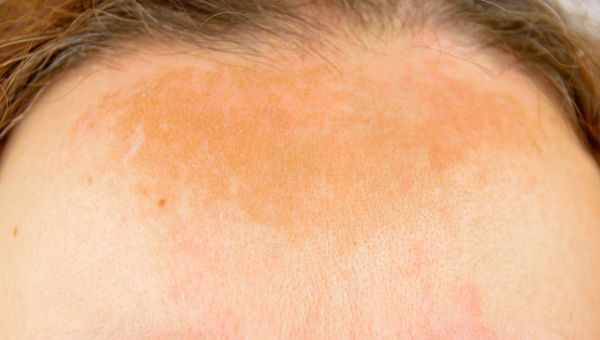
Melasma
Blotchy, brownish-gray skin patches that can appear on the cheeks, nose, forehead, chin, and upper lip after sun exposure are known as melasma. Melasma is most common in women between 20 and 40 years old. People who have darker skin, are pregnant, or have a family history of melasma are also more prone to the condition.
Experts aren’t exactly sure what causes melasma, but it occurs when melanocytes (skin cells that make color) produce too much color. Exposure to ultraviolet (UV) light, medications that make you more sensitive to sunlight, birth control pills, pregnancy, tanning beds, and thyroid disease are believed to be triggers.
If you do have melasma, it will often fade away on its own. It may also subside if you stop taking medications that may be causing it and if you limit your sun exposure. If it doesn’t resolve on its own, a dermatologist might prescribe hydroquinone, tretinoin, or corticosteroids to help lighten up patches of skin. If the creams and gels don’t seem to do the trick, procedures like chemical peels, microneedling, or laser treatments can clear up patches.
Prevent melasma by wearing sunscreen, wide-brimmed hats, and sunglasses when you’re going outside. Avoiding harsh skincare products and waxing can also decrease the risk. When choosing skincare products, look for options that don’t sting or burn when you apply them.
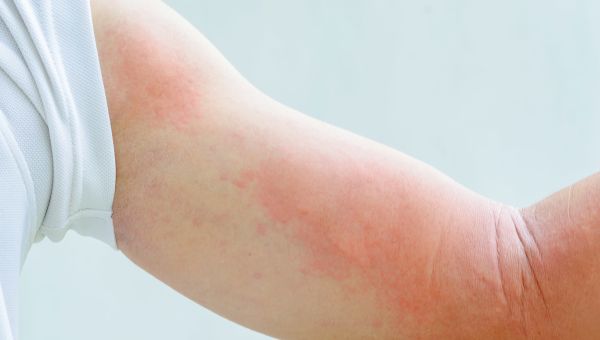
Chafing
Chafing is sore, inflamed skin that typically occurs when part of your skin rubs against other parts of your skin, clothing, or other items. It’s especially common during the summer if you’re running or walking outside in the heat. The most common spots for chafing are nipples, legs, the crotch area, and underarms.
“If you’re running for hours, your shirt or even the fabric of your sports bra can rub up against your skin and be pretty irritating,” says Dr. Cohen. There are some preventive measures you can take, however.
- Apply petroleum jelly or ointment to chafing-prone areas and cover with a soft bandage.
- Keep your clothes clean and dry.
- Wear properly fitted, moisture-wicking clothing (socks, too) when possible.
- Make sure your shoes fit properly.
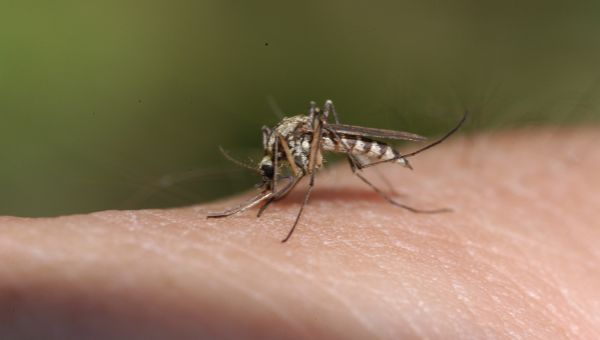
Mosquito Bites
“From a fragrance perspective, whether it’s your body’s own fragrance or some of the things that you wear, you may notice you’re more prone than others to mosquito bites,” says Cohen.
Mosquitos tend to lurk around standing water, so always dispose of the standing water in your potted plants, gutters, and other outdoor items. If you have a swimming pool, be sure to use chemical treatments correctly and make sure the water is circulating. When you head outdoors, wear an insect repellent with DEET, picaridin, IR3535, or lemon eucalyptus oil. Wear long sleeves and pants when you can, too.
If you do get a bug bite, don’t scratch it. “If you scratch it to the point of irritation, you can get into an itch-scratch cycle which will cause more swelling,” says Cohen. If you can’t stop picking at it, try covering your bite with a bandage. If your bites are really bothering you, anti-itch or antihistamine creams can help minimize the itching.
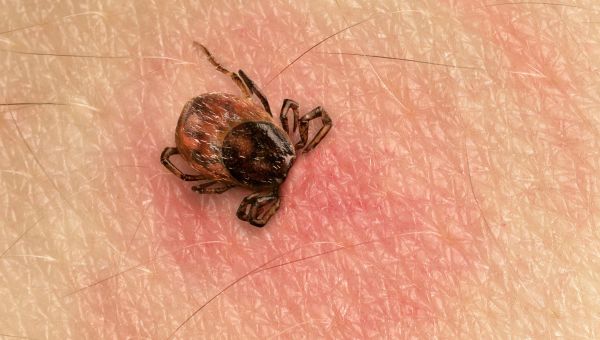
Tick Bites
Ticks are small, bloodsucking arachnids that can spread serious diseases like Lyme disease, ehrlichiosis, and Rocky Mountain spotted fever. Because ticks like warm, humid areas with lots of grass and shrubbery, there’s a lot more attention on ticks and Lyme disease in the summer, says Cohen.
While it’s rare to become infected with one of these diseases from a tick bite, undiagnosed Lyme disease can cause serious health issues like arthritis, heart problems, nervous system issues, and memory difficulties.
To protect yourself from tick bites and the diseases they carry, always use a bug repellent with DEET, permethrin, PMD, or picaridin as the main ingredient. If you’re going out in humid, wooded areas, try to wear clothing that covers you up from head to toe. You can even tuck your pant legs into your socks. In fields and forests, stick to the middle of trails, and do a full-body tick check once you’re out.
Cohen says to be on the lookout for tick bites and Lyme disease rashes. Lyme disease usually causes a rash in the shape of a bullseye and, in some cases, flu-like symptoms such as fever or chills. If you have these symptoms, see your healthcare provider (HCP) right away.
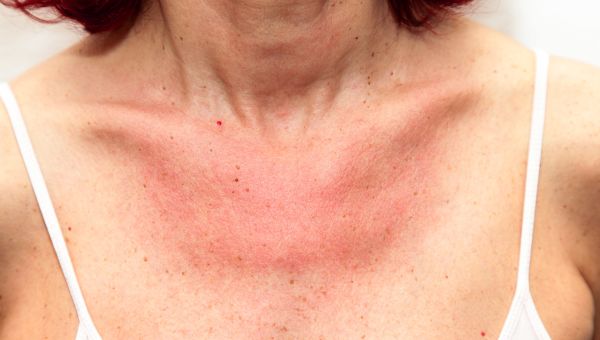
Heat Rashes
Heat rashes are common in heat and humidity. When blocked pores trap sweat under the skin, a rash can develop. Also known as miliaria, heat rashes tend to look and feel like blisters and may itch or feel prickly. It’s common to get heat rashes in areas where your skin and clothes come together and cause friction.
Heat rashes normally go away on their own after you cool down and avoid further exposure to heat. You can help prevent heat rashes by wearing loose cotton clothing when outdoors and seeking shade. Once you’re inside, try showering with cool water and letting your skin air dry. If your skin feels warm, itchy, or irritated, calamine lotion and cool compresses can help relieve the discomfort. Also try making sure you’re in air conditioning as much as possible.
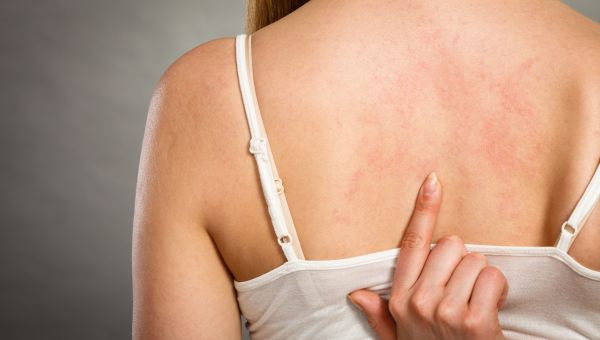
Polymorphous light eruption
There are several different types of photosensitivity disorders (also known as sun allergies), and they all have slightly different symptoms.
The most common is polymorphous light eruption (PMLE). “If you have a little bit of a rash on your arms in the spring or summer, but you don’t see it any more for the rest of the year, you may have PMLE,” says Cohen.
Most cases of PMLE flare up in spring (when your skin isn’t used to being in the sun) and the lesions usually heal without scarring in about 2 to 3 days, but repeated exposure may make them last longer. The irritation can cause an itchy rash, and in rare cases, nausea and headaches that appear as early as 30 minutes after sun exposure. The rash normally appears as a cluster of bumps and blisters.
The skin typically adapts with repeated sun exposure, a process known as hardening. This means your skin is getting more used to the sun, says Cohen.
If you’re prone to this light-sensitive condition, it’s best to avoid the sun between 11 a.m. and 3 p.m. If your PMLE is painful, see your HCP. They may recommend a corticosteroid cream or pill. To prevent future outbreaks, they might prescribe phototherapy, a process that can decrease your skin’s sensitivity to light.

Schlessinger DI, Anoruo M, Schlessinger J. Biochemistry, Melanin. StatPearls. Jan 2023.
Cleveland Clinic. Melanin. Page last reviewed March 29, 2022.
Cleveland Clinic. Sun-damaged Skin (Photoaging). Page last reviewed Nov 28, 2022.
Robert Shmerling. The problem with tanning (and the myth of the base tan). Harvard Health Publishing. April 12, 2017.
American Academy of Dermatology Association. What to wear to protect your skin from the sun. Accessed on June 23, 2023.
Piedmont Healthcare. The difference between physical and chemical sunscreen. Accessed on June 23, 2023.
American Academy of Dermatology Association. How to treat sunburn. Accessed on June 23, 2023.
American Academy of Dermatology Association. Melasma: Causes. Page last updated February 15, 2022.
American Academy of Dermatology Association. Melasma: Overview. Page last updated February 15, 2022.
American Academy of Dermatology Association. Melasma: Diagnosis and Treatment. Page last updated February 15, 2022.
American Academy of Dermatology Association. Melasma: Self-Care. Page last updated February 15, 2022.
Cleveland Clinic. Chafing. Page last reviewed July 19, 2022.
Centers for Disease Control and Prevention. Prevent mosquito bites. Page last reviewed July 11, 2022.
Centers for Disease Control and Prevention. Mosquito bite symptoms and treatment. Page last reviewed May 24, 2023.
Centers for Disease Control and Prevention. Tickborne Diseases of the United States. Page last reviewed August 5, 2022.
Centers for Disease Control and Prevention. Preventing tick bites. Page last reviewed July 1, 2020.
American Academy of Dermatology Association. How to remove a tick and prevent future bites. Accessed on June 23, 2023.
Centers for Disease Control and Prevention. Lyme disease. Page last reviewed August 5, 2022.
Centers for Disease Control and Prevention. Tick removal. Page last reviewed May 13, 2022
Cleveland Clinic. Heat rash/prickly heat. Page last reviewed March 2, 2022.
Cleveland Clinic. Sun allergy. Page last reviewed May 4, 2022.
Cleveland Clinic. Polymorphous Light Eruption (PMLE). Page last reviewed February 20, 2023.
More On


video

article

slideshow


video


video
